

Max Davies
2026 GWM Haval Jolion review
5 Hours Ago
Are there good reasons to pay extra for the new Sorento plug-in hybrid, or should you just order the diesel version?

Senior Contributor
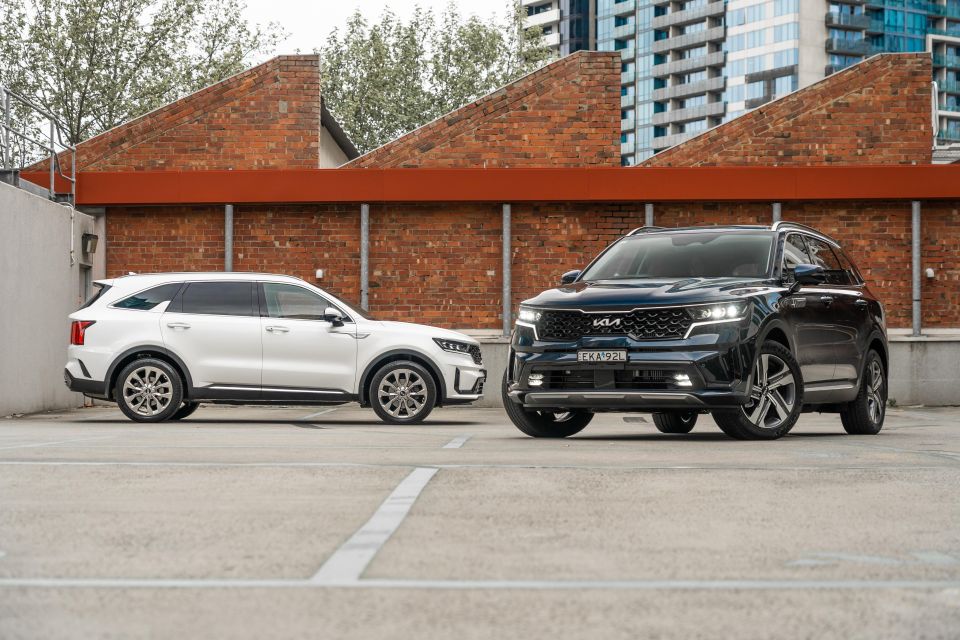

Senior Contributor
Kia has just launched a plug-in hybrid (PHEV) drivetrain option for the excellent Sorento seven-seat SUV.
While it’s a more expensive proposition, it promises regular zero-emissions driving with a combustion backup for long trips.
Plug-in hybrid take-up is growing, albeit from a low base, as more options come on stream. Options such as the Sorento will no doubt drive a continued uptick.
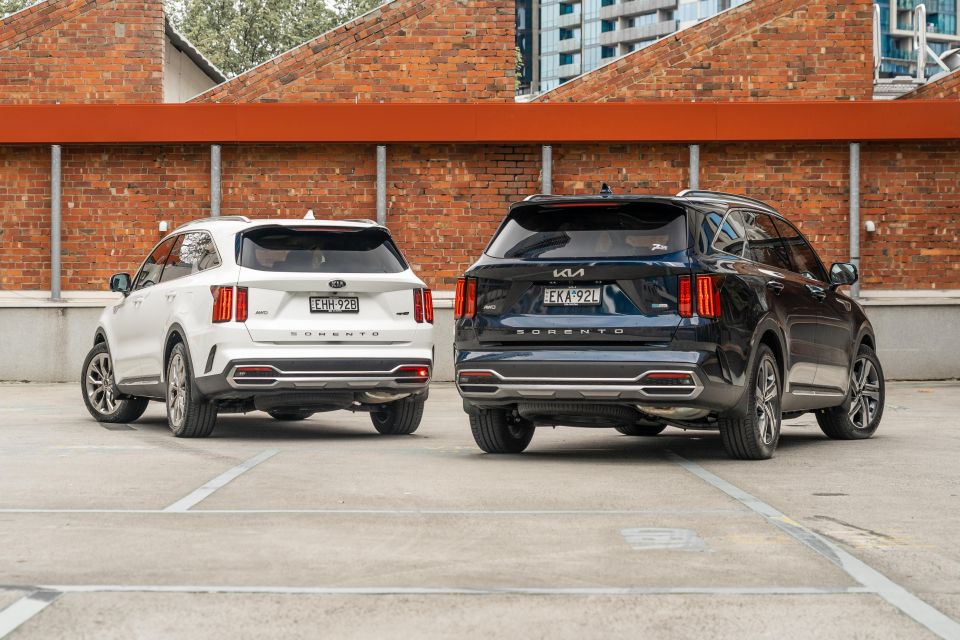
Is it worth a look for you? Or you better off just getting the diesel version? That is, if you’re able to wait – given supplies are still falling short of demand.
One small note: Kia recently updated the petrol and diesel Sorento range with new badges for MY22 in line with the PHEV you see here. We used a white MY21 model, but there are no important mechanical changes to take into account.
After even more detail? Check out our single-car reviews of both engine variants below.
MORE: 2022 Kia Sorento GT-Line Plug-in Hybrid review MORE: 2021 Kia Sorento GT-Line Diesel review
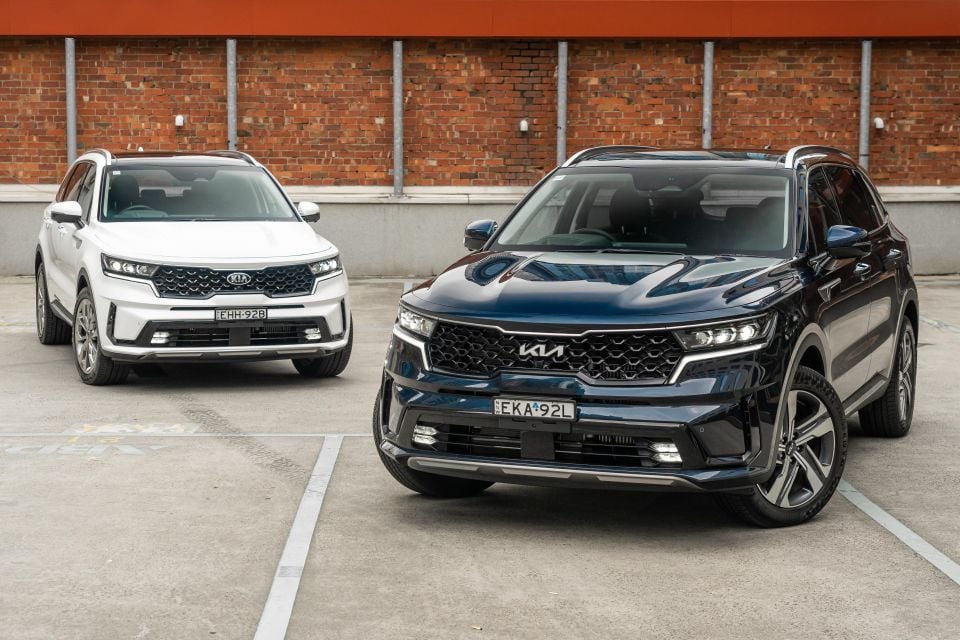
The best-selling Sorento diesel is the GT-Line range-topper, so it makes sense to feature it here. The PHEV only comes as a GT-Line due to continued tight supply, so even better.
Kia offers national drive-away pricing on its cars, meaning no difference between states and territories.
The Sorento GT-Line diesel is $67,290 on the road, while the Sorento GT-Line PHEV costs a rather steep $81,990 drive-away. So, $14,700 for a petrol-electric drive system then.
While the added price seems steep, looked at another way it seems acceptable.
A ‘regular’ (closed-circuit) hybrid Toyota Kluger Highlander costs nearly $83,000 on the road, while the Volvo XC90 PHEV costs $116,990 before on-road costs.

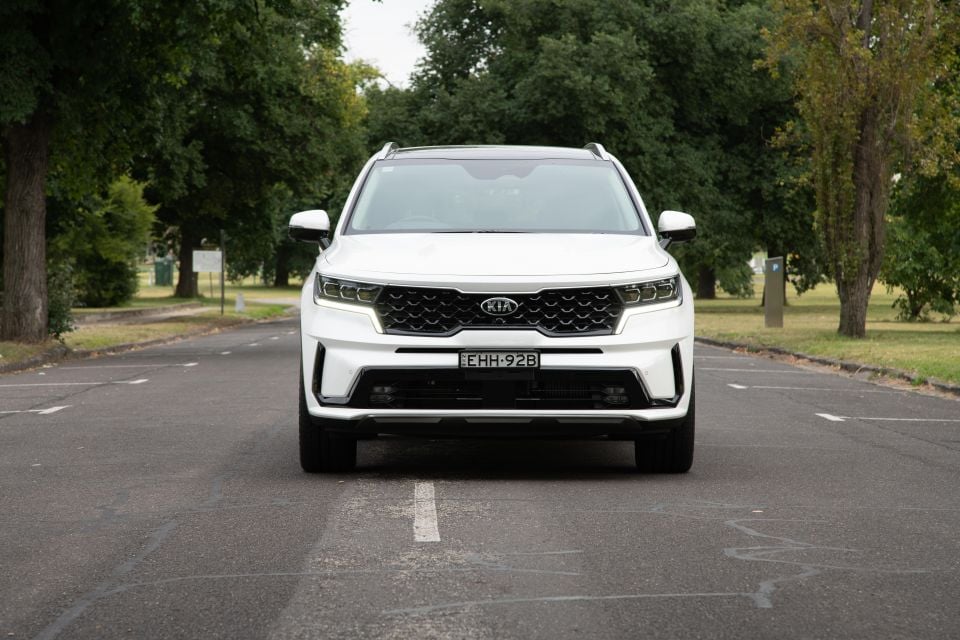
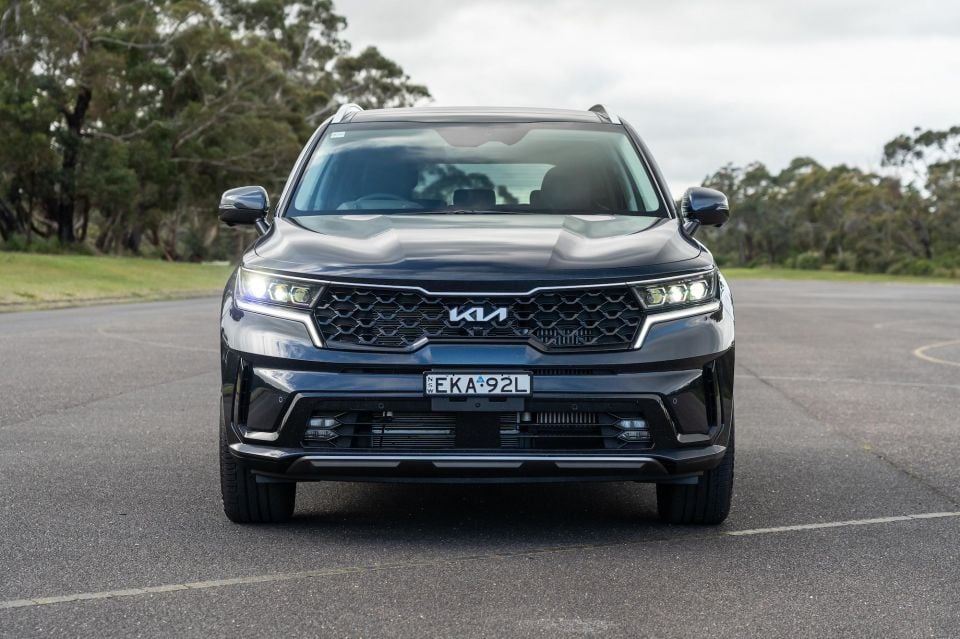
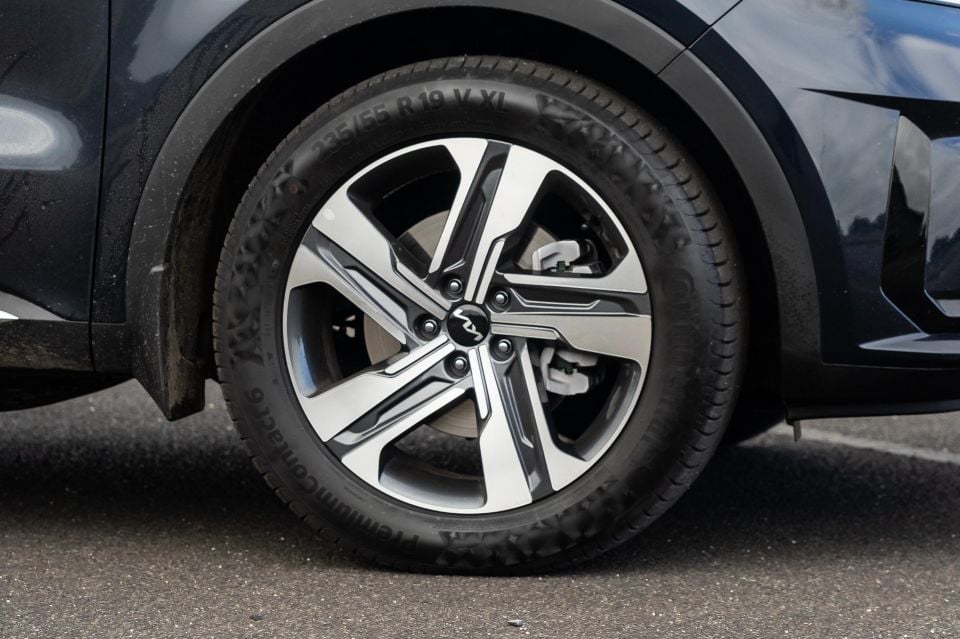
This pair are specified like luxury Euros, which reinforces the value-for-money that both offer in context – but the diesel in particular.
Standard features in common include:

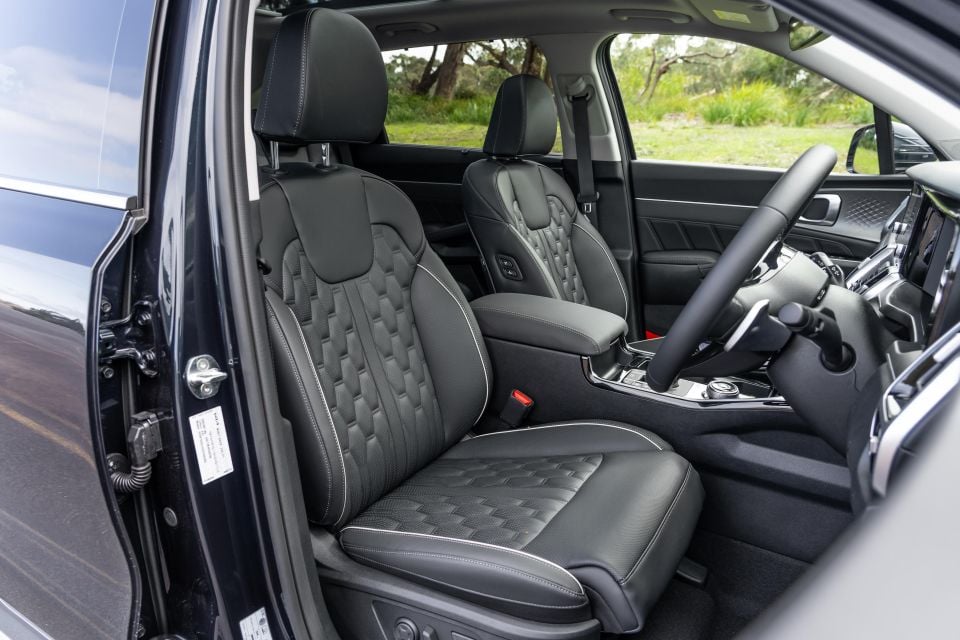
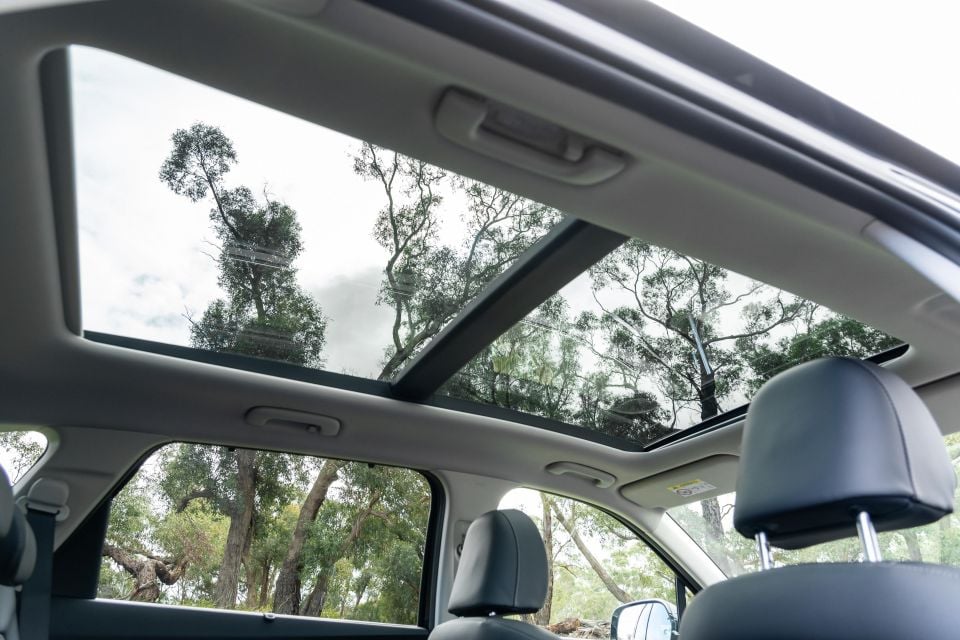
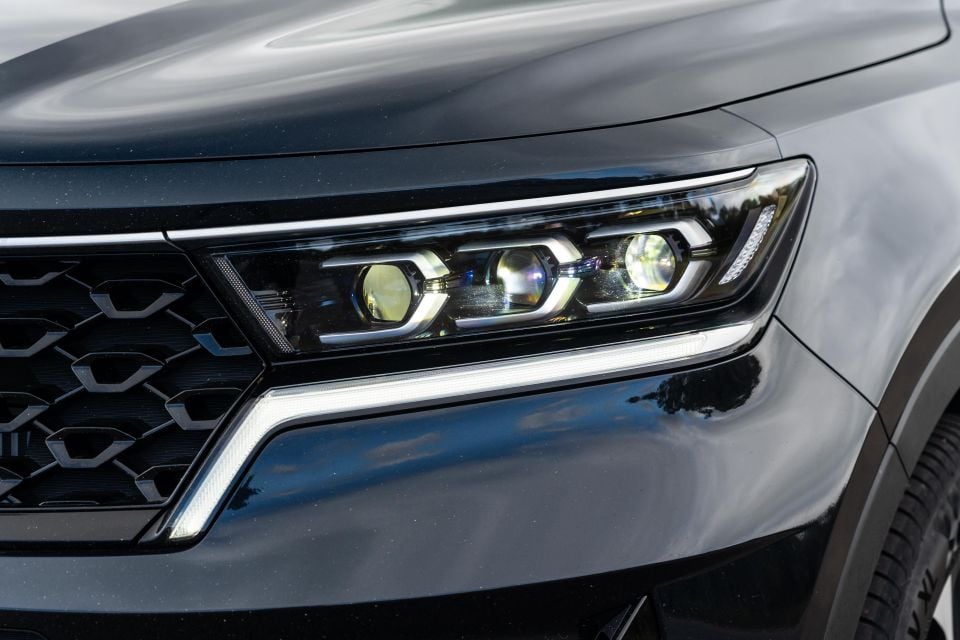
Both the diesel and PHEV share colour palettes: Clear White, Silky Silver, Steel Grey, Mineral Blue, Aurora Black, Gravity Blue, and Snow White Pearl. All but Clear White ask for an additional $695.

The Kia Sorento wears a five-star ANCAP safety rating based on tests conducted by Euro NCAP in 2020. All variants are now covered by this rating, including petrol, diesel, hybrid and plug-in hybrid versions.
Category scores include 82 per cent for adult occupant protection, 85 per cent for child occupant protection, 63 per cent for vulnerable road users protection and 89 per cent for safety assist.
There are ISOFIX child seat anchors in both the second (outboard) and third rows, with top-tether points on all rear positions.
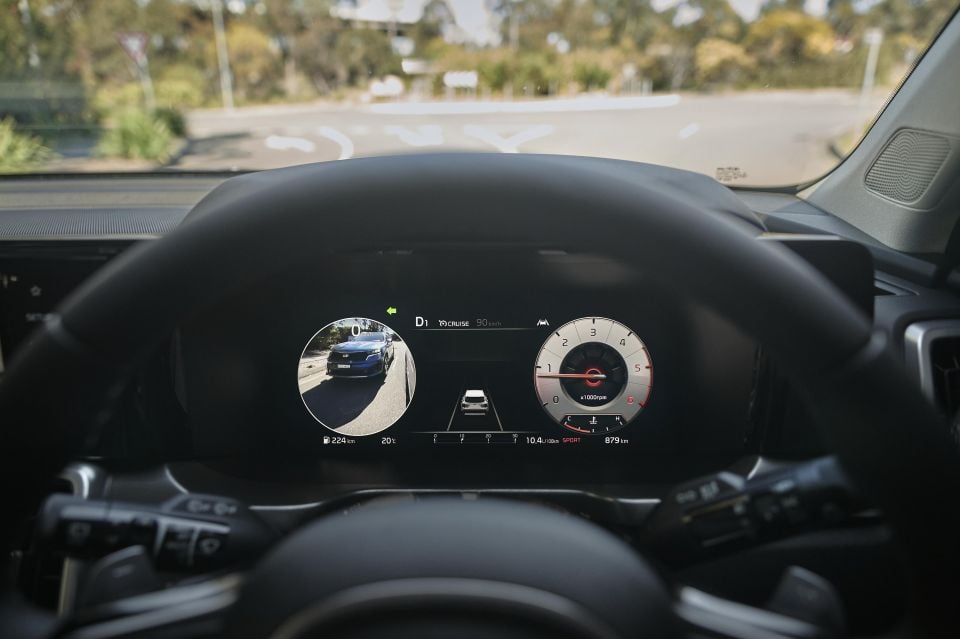
Standard safety equipment across the range includes:
There are also Blind Spot View Monitor side cameras that display the car’s rear-sides in the digital instruments, as well as Parking Collision Avoidance Assist.
Further, the GT-Line’s enhanced Safe Exit Assist feature can lock the doors to prevent an occupant opening the door into the path of an oncoming road user.
The PHEV GT-Line misses out on the Remote Smart Park Assist feature that lets you pull the diesel out of a tight bay using the key fob as a remote controller. Dang.

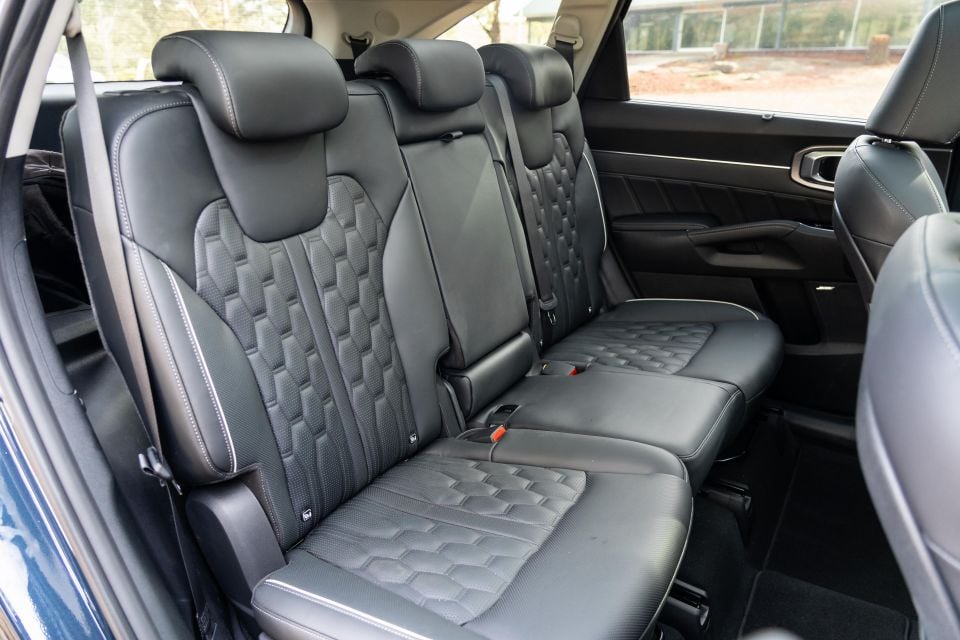
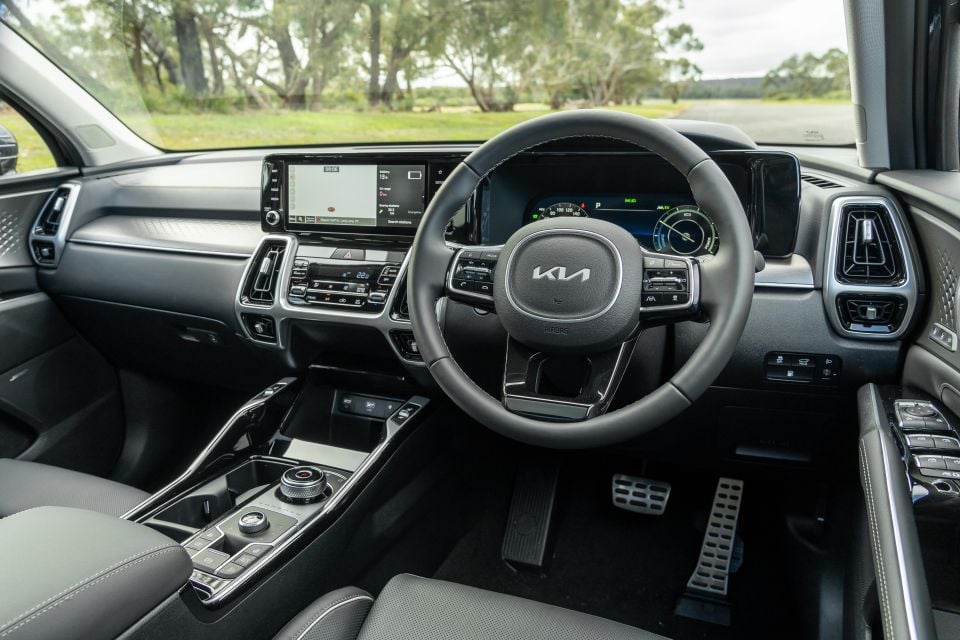

The MY22 Sorentos get the new Kia logo on the steering wheel hub and on the infotainment startup/shutdown animations.
The GT-Line’s flagship status really rings true in the design and execution of the cabin, with a good ratio of padded surfaces, the lovely quilted Nappa leather upholstery, sharp high-definition displays, and long list of comfort and convenience features.
Opting for the PHEV doesn’t really change the experience, though you will notice the hybrid power meter in place of the tachometer in the digital instrument cluster (you can select a tacho instead), as well as the EV/Hybrid mode button on the centre console.
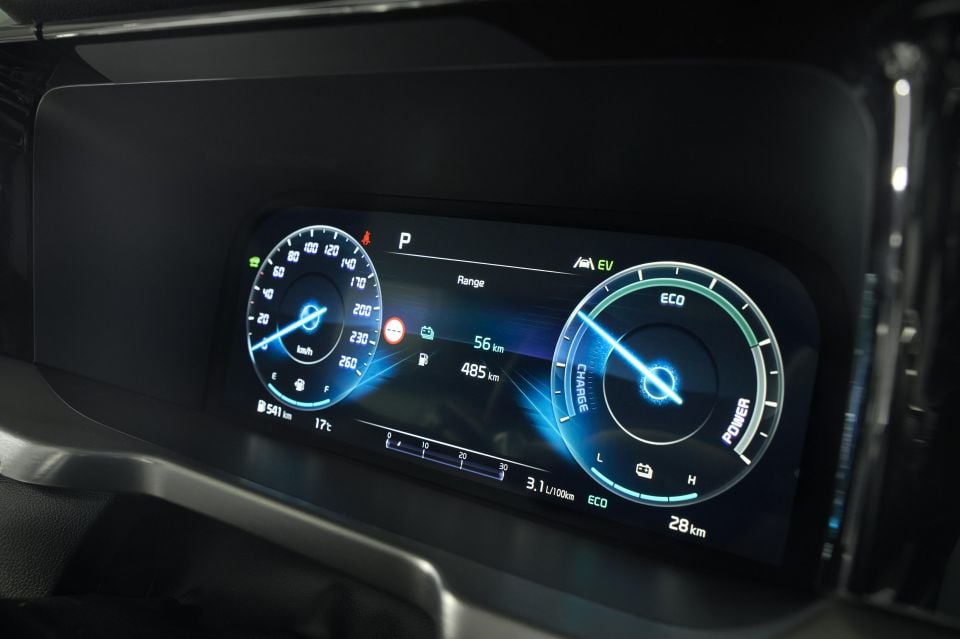
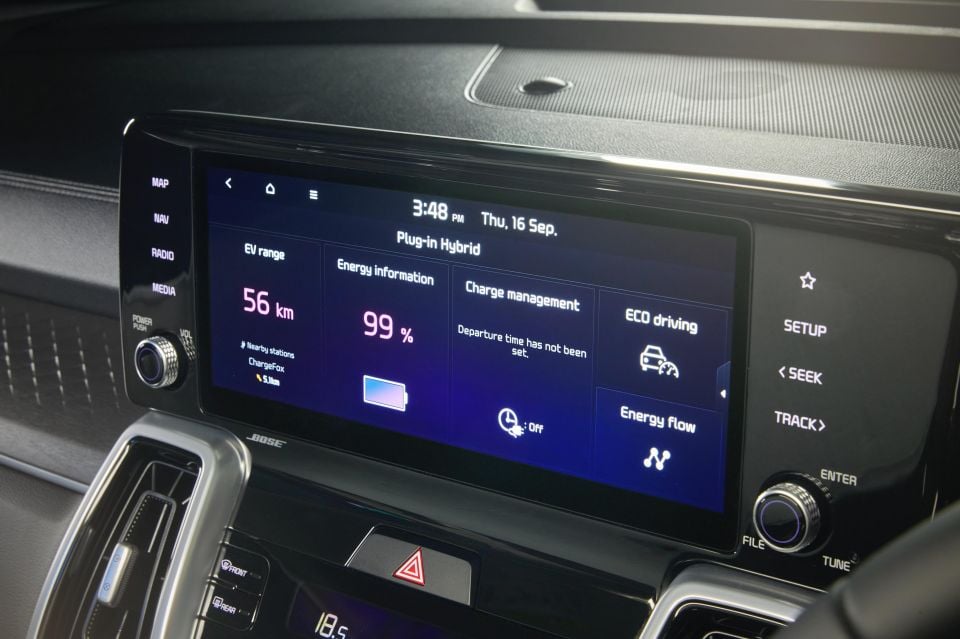
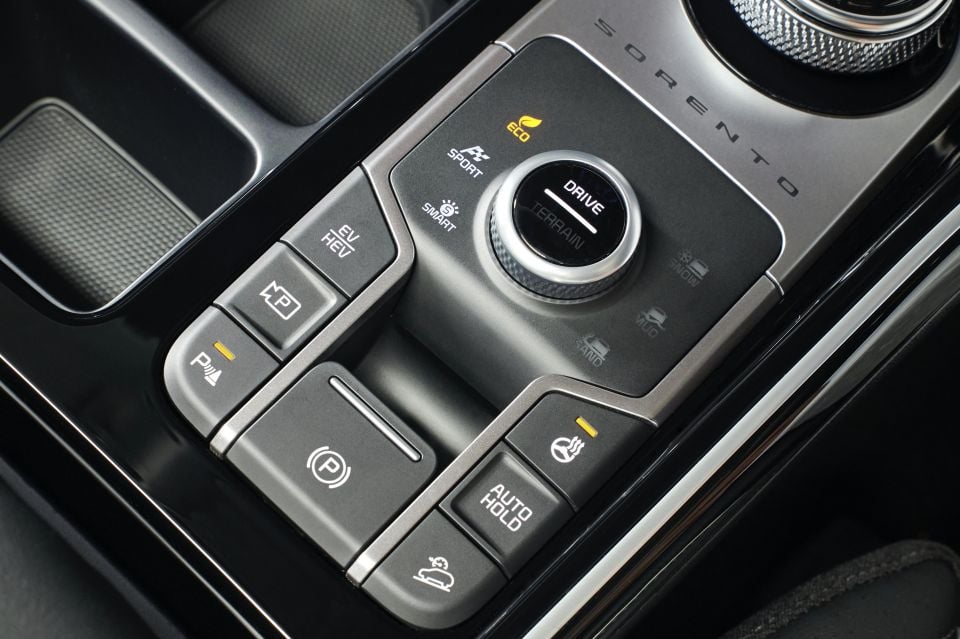
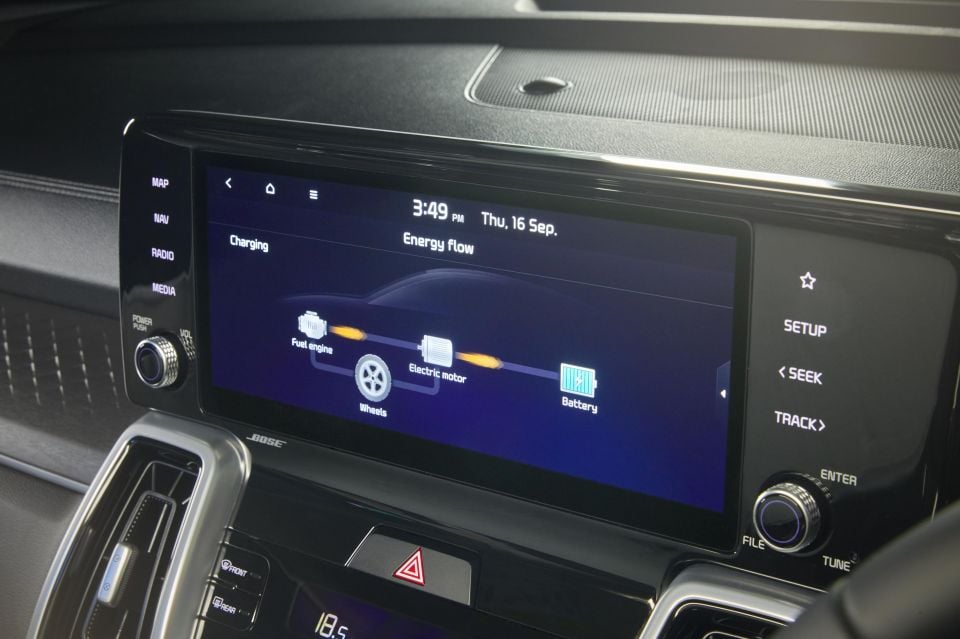
There’s also a special button on the centre stack to limit the climate control to just the driver’s zone to save energy – it’ll give you a couple extra kilometres of range according to the on-board trip computer.
You also get new hybrid menus within the infotainment and the navigation system can search for nearby charge stations.
Boot space is impacted by the PHEV’s battery under the middle seat, but minimally so.
The Type 2 to 3-pin charge cable comes in a bag with velcro so it doesn’t slide around the load bay, and under the boot floor where you’d usually find extra storage there’s some added electric components. There’s also still a full-size spare wheel too.
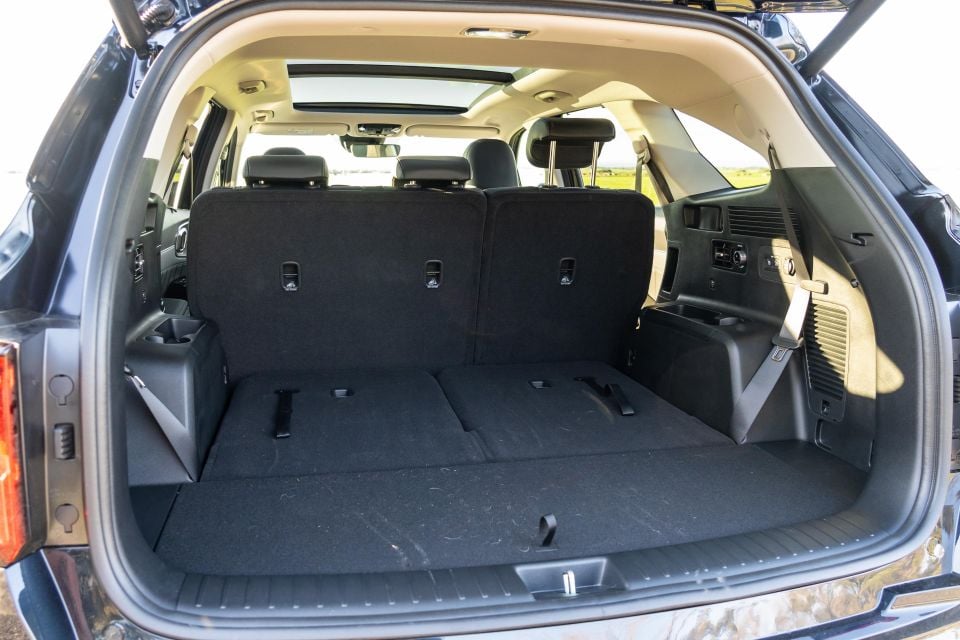
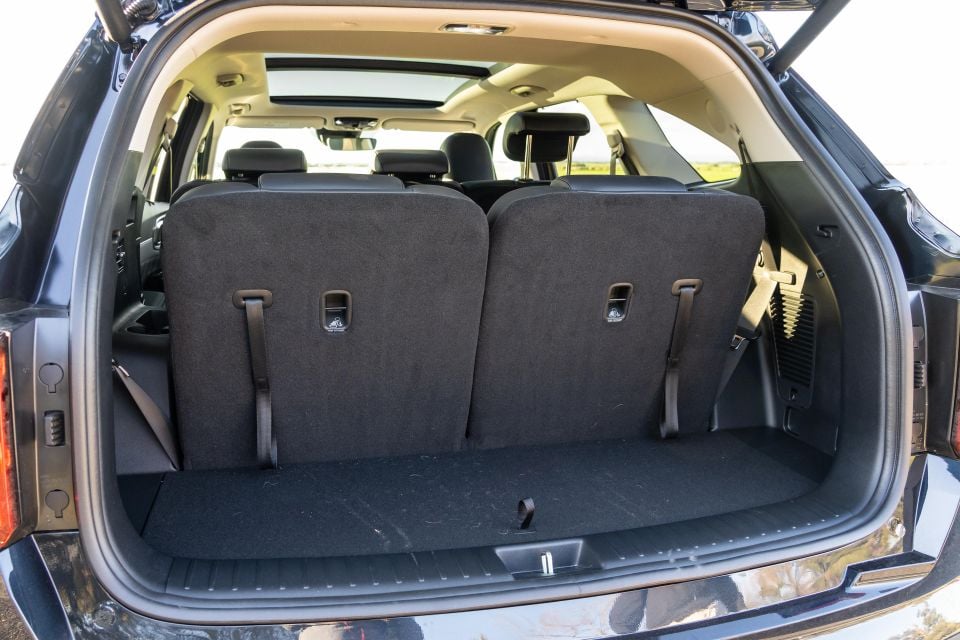
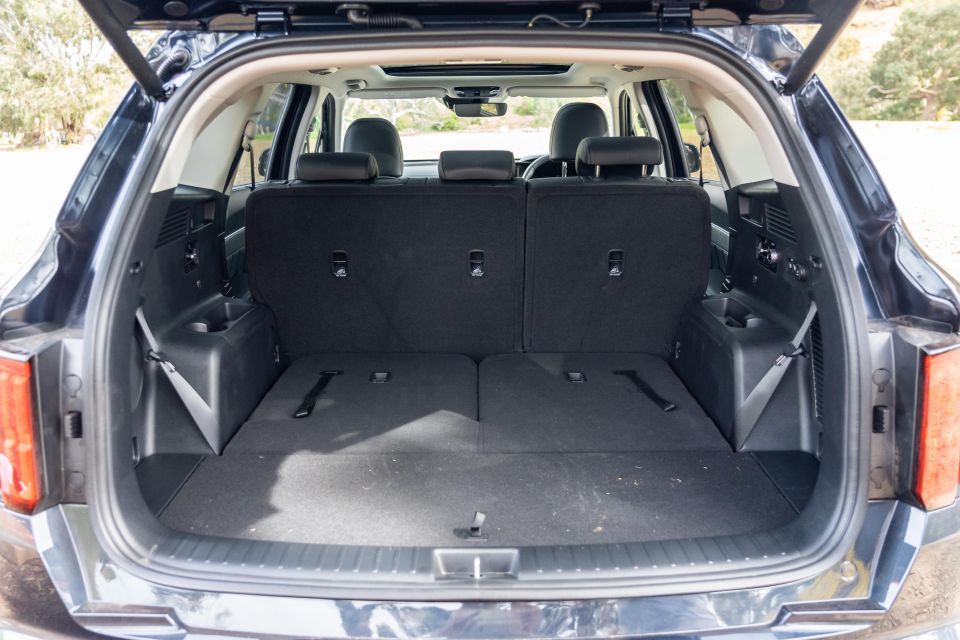

| Sorento diesel | Sorento PHEV | |
|---|---|---|
| Luggage 2 seats up | 2011L | 1988L |
| Luggage 5 seats up | 616L | 604L |
| Luggage 7 seats up | 187L | 175L |
| Tare mass | 1908kg | 2056kg |
| GVM (mass + payload) | 2610kg | 2680kg |
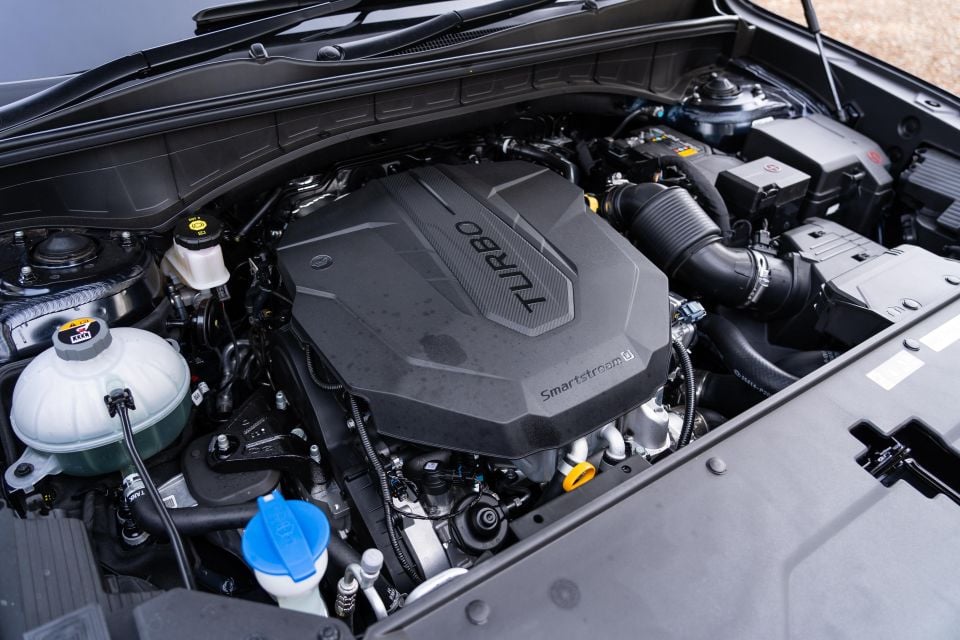
Diesel:
The Sorento diesel uses a 2.2-litre four-cylinder turbo-diesel producing 148kW of power at 3800rpm and 440Nm of torque between 1750 and 2750rpm.
It’s mated to an eight-speed automatic (wet dual-clutch variety) and management that seems to load up revs just as you take-off to smooth out your progress, with on-demand all-wheel drive that sends torque to the rear wheels when needed.
It also has a centre locking mode to fix the torque split.

PHEV:
There’s more going on in the PHEV. First there’s a 1.6-litre turbocharged petrol engine making 132kW and 265Nm paired to a six-speed automatic and on-demand AWD (not a twin-motor affair a la Mitsubishi).
But there’s also a 67kW and 304Nm electric motor to take into account, which is powered by a 14kWh storage-capacity lithium-ion battery. The electric motor is mounted between the engine and transmission so the full output of both can be transferred in parallel if needed.
The total system power and torque outputs are 195kW of power and 350Nm of torque, which is roughly equivalent to the base 3.5-litre petrol V6 option.
It’s quite important to remember that the penalty of carrying this complex drivetrain is weight: the battery mounted under the middle seats weighs about 140kg, reflected in the respective tare weight of the two cars: 1908kg for the diesel versus 2056kg for the PHEV.

Before we get to the engines, they’re obviously quite similar dynamically. The PHEV feels a little heavier in corners and under brakes, because it is, but the ride quality in the pair is similar because the diesel’s tyres have less sidewall (20-inch wheel versus 19-inch).
Both cars have 325mm ventilated front and rear brakes, though the PHEV also has a brake-energy regen system. Front suspension comprises struts and the rear multiple linkages, the steering is electric, and the turning circle 11.6m.
It really drives and rides like a premium vehicle, which is not bad considering the passively-damped springs compared to the adaptive air-sprung setups of German alternatives.
Both the diesel and PHEV come with various drive modes that adjust the throttle and steering parameters, plus Snow/Mud/Sand terrain modes designed to assist in low-traction situations.
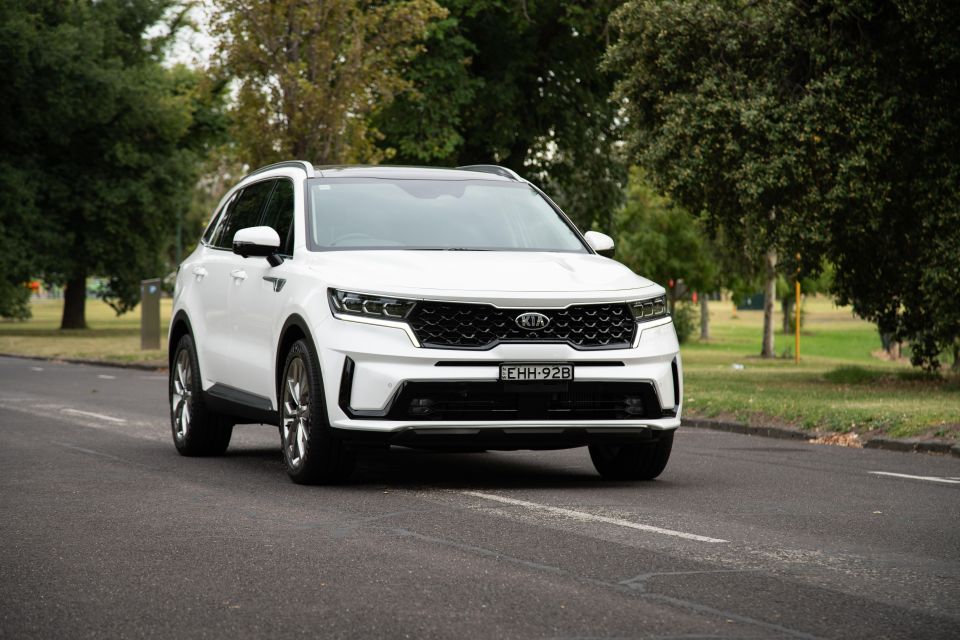
Where expert car reviews meet expert car buying – CarExpert gives you trusted advice, personalised service and real savings on your next new car.
Diesel
The diesel engine is at its happiest on highways, where it can just coast on its reservoirs of torque, sitting at 100km/h ticking over with minimum fuss. It’s not necessarily as immediate off the mark as the electrified version but its rolling response on overtakes feels more assured.
While the lab-tested combined cycle fuel economy is 6.1 litres per 100km, the ‘extra-urban’ (highway) figure is a hybrid-like 5.3L/100km. Matching this means a driving range around 1200km between refills.
I didn’t match this figure though, instead recording 7.4L/100km over a 290km distance combined-cycle route.
The Sorento GT-Line diesel also has a better braked-trailer towing capacity of 2000kg (200kg download max) compared to the PHEV’s 1350kg/100kg respective figures.
Where the diesel is no doubt less appealing is urban commuting. Yes, it’s vastly more refined than old-school diesels in terms of vibrations and noise, but it’s still louder from the outside and lacks stop/start for those times sitting at the school pickup point.
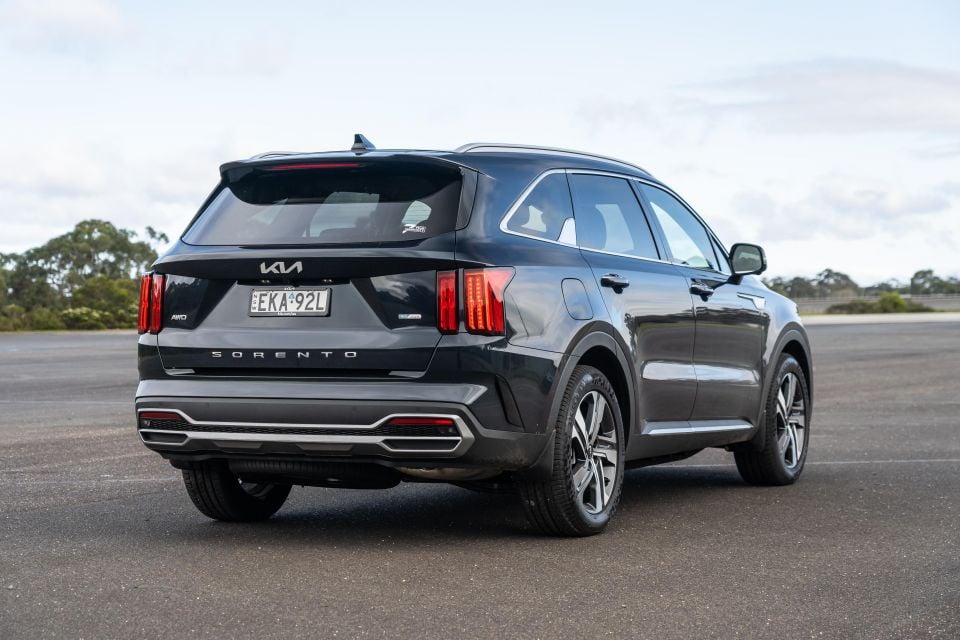
PHEV:
Where the Sorento PHEV really shines is in town, doing general errands, where you can really leverage the smoothness and economy of the drivetrain. The sound of silence!
Kia claims you can drive up to 68km on battery power alone, meaning the Sorento is capable of doing the majority of daily trips essentially as a full EV. That said this 68km range is only achievable in traffic where the energy recuperation systems are highly operational.
A more realistic figure is 57km (as per WLTP testing figures), or even 50km if you’re driving with a highway skew. An example of my morning use was using 31 per cent of the battery’s charge covering 20km, though the engine kicked in briefly under hard acceleration.
Charge-wise it comes with an orange cable that plugs into your garage’s regular powerpoint at one end, and the car’s Type 2 socket at the other. You can use a public AC charge cable too, but a DC charger’s CCS-Type 2 double head won’t fit.

A 3.3kW rate AC single-phase charge from 15 per cent to 95 per cent takes as little as 3.5 hours, but many nights you’ll just be topping it up.
The EV range mentioned explains why the advertised combined-cycle fuel economy claim is just 1.6L/100km – two-thirds of a 100km loop may require next to no petrol. It also shows why you should take that number with a grain of salt when planning a long road trip.
Our time with the car, including several 100km-plus trips and making sure to charge at night from a wall powerpoint, covered a cumulative 510.4km with an overall average of 4.2L/100km.
Separately I ran the battery to zero useable charge and then drove a 63km loop. On this loop the petrol engine drove the car and kept the batteries topped up enough just to assist alongside brake-energy recuperation, and I averaged 7.1L/100km.
In other words the diesel can become (especially on longer trips) similarly or even more efficient than the PHEV – likewise if you don’t make sure to keep those batteries charged up ahead of daily trips.
It’s a slippery concept, giving definite fuel usage for a PHEV. It all comes down to your driving and charging habits.
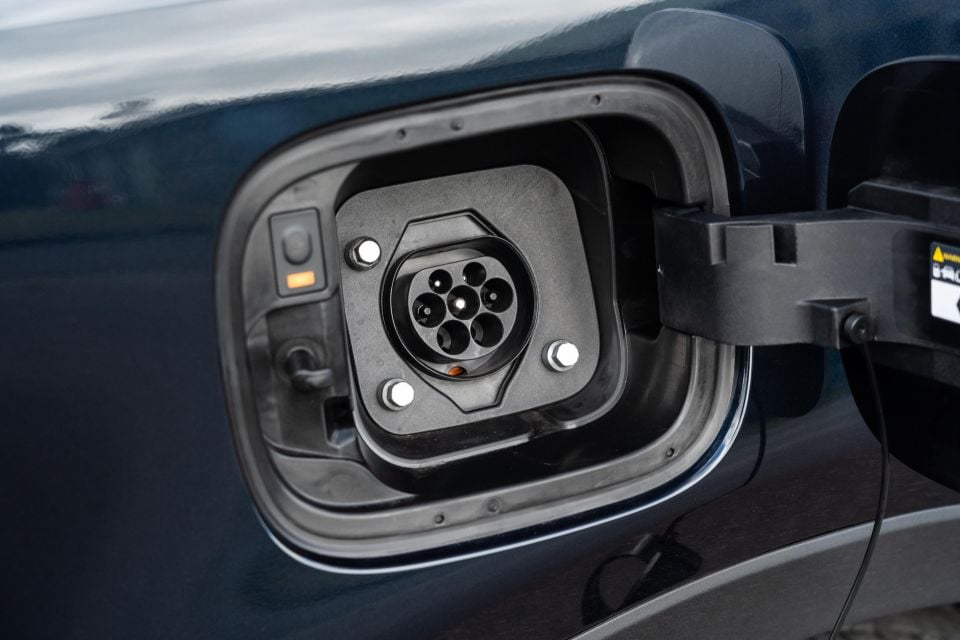
The PHEV’s higher speed rolling acceleration doesn’t feel as immediately urgent as the diesel’s either, because the system torque output is lower and the weight higher.
This being the case, the upside of a PHEV next to a full EV is that it keeps going once the battery is without useable charge, so it can easily be a 24/7, 365 proposition.
Regardless of the battery state it can use the electric motor to get rolling, so even if the engine has to kick in you’re already rolling and therefore it’ll be more refined. It’s quieter and smoother than the diesel, then – especially with spare battery charge.
You can switch between EV and Hybrid modes on the go via button, the latter leaning on more petrol power at efficient, low-stress moments.
I’d have liked a Hold mode which preserves the state of battery charge at the start of a highway jaunt and keeps it fully in reserve for when you’re back in urban surrounds – environments where the electric motor is more efficient and the combustion engine less so.
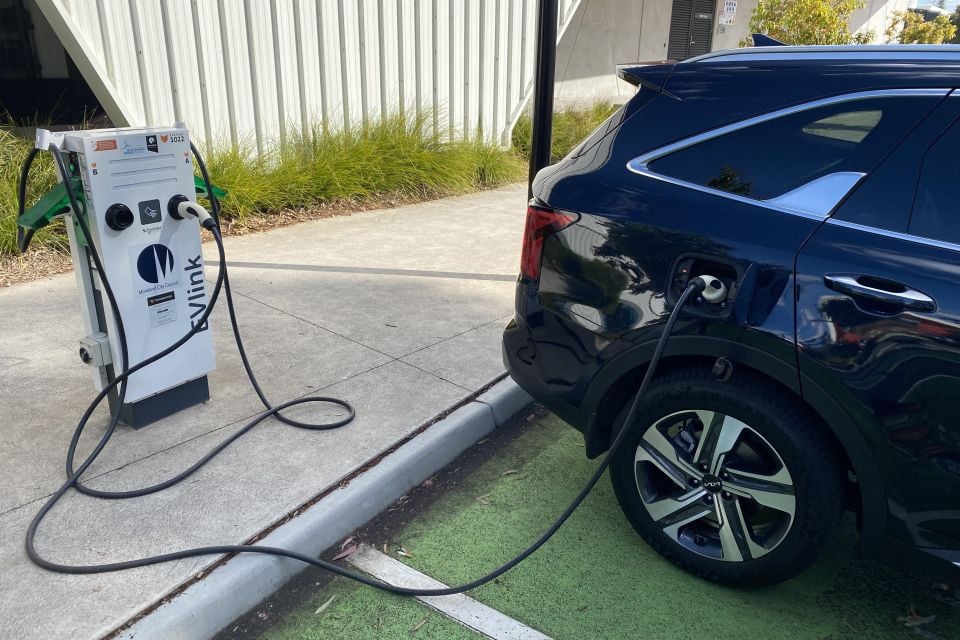
| Sorento diesel | Sorento PHEV | |
|---|---|---|
| Combustion engine | 2.2-litre 4-cyl turbo | 1.6-litre 4cyl turbo |
| Transmission | 8-speed wet DCT | 6-speed auto |
| Driven wheels | On-demand AWD | On-demand AWD |
| Motor | – | 67kW/304Nm |
| Battery capacity | – | 14kWh |
| System power | 148kW | 195kW |
| System torque | 440Nm | 350Nm |
| Tare mass | 1908kg | 2056kg |
| EV range claim | – | 68km |
| EV range expected | – | 55km |
| Fuel economy claim | 6.1L/100km | 1.6L/100km |
| Our fuel economy* | 7.4L/100km | 4.2L/100km |
| Starting with 0% charge | 7.1L/100km |
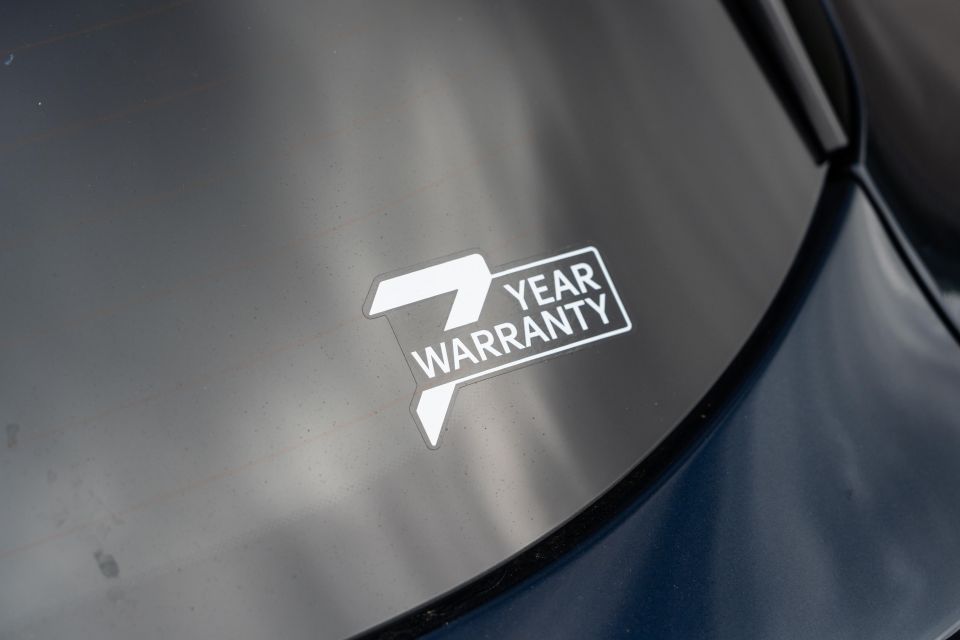
The Kia Sorento range is covered by the brand’s seven-year, unlimited-kilometre warranty which also includes seven years of capped-price servicing and up to eight years of roadside assistance if maintained by your Kia dealer.
Additionally, the Sorento Plug-in Hybrid’s high-voltage components (e-motor, battery etc.) are covered by a seven-year, 150,000-kilometre warranty.
See service costs for each powertrain below:
2.2D AWD
1.6T PHEV AWD

The PHEV lets you do daily trips in silent and smooth electric mode and is capable of running with acceptable efficiency when you neglect to charge it up. It’s like a normal hybrid, only more capable, provided you charge it with at least some regularity.
It’s certainly a nicer experience when used as intended in more urban-focused commuting, though the cost gulf means you won’t necessarily be focusing on the economic rationale. You’ll just be keen on silent commuting and the satisfaction of emitting less local CO2.
On the other hand if you’re buying a family SUV that regularly does longer journeys with a load, or even tows a boat or caravan, then the diesel does strike me as the better balance – on the basis of torque, economy, payload (78kg greater) and cost.
That last point is the big one.
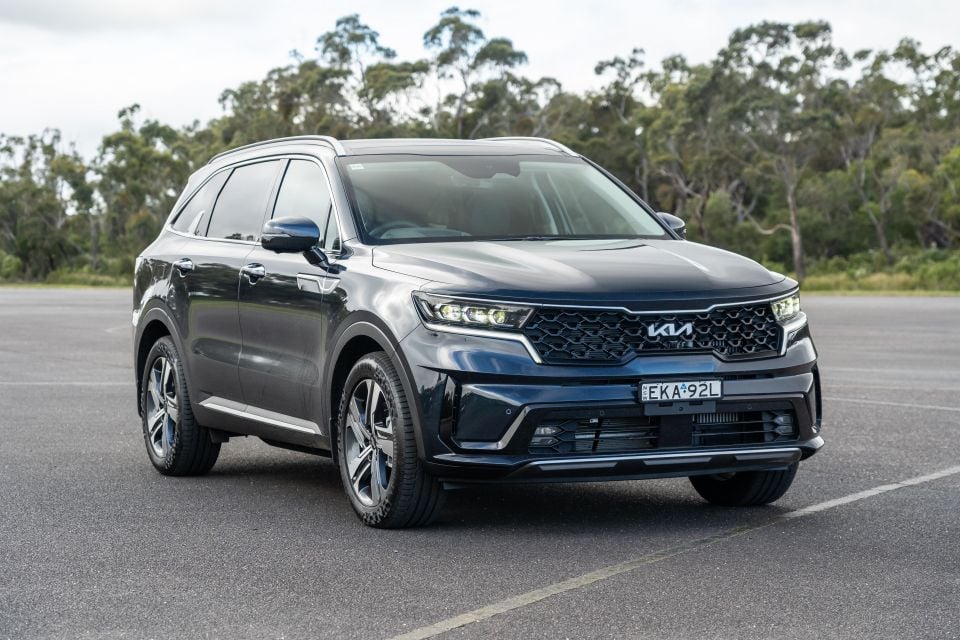
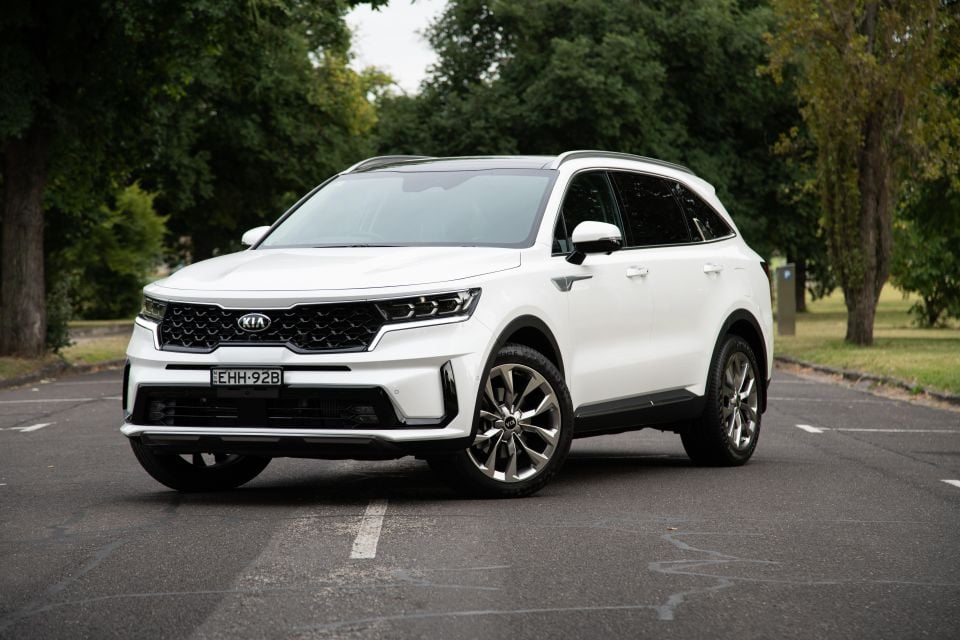
Keep in mind the fact that Kia will launch a regular hybrid Sorento in 2022 that’s likely to be priced around the same mark as the diesel and offer a quieter experience. However this Toyota-style hybrid also won’t be able to match the PHEV’s electric mileage.
MORE: 2022 Kia Sorento Plug-in Hybrid review MORE: 2021 Kia Sorento GT-Line Diesel review
Click the images for the full gallery
MORE: Everything Kia Sorento
Share your thoughts with us in the comments below!
Share your thoughts and write a review of a car you own and get featured on CarExpert.


Max Davies
5 Hours Ago


Damion Smy
13 Hours Ago
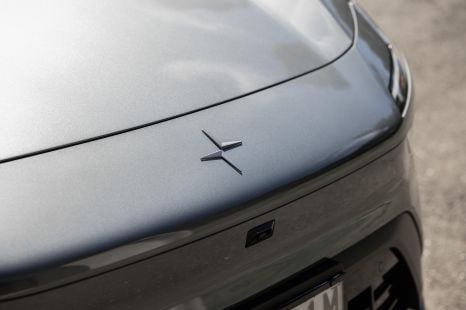

Damion Smy
14 Hours Ago


Damion Smy
15 Hours Ago


Damion Smy
18 Hours Ago


CarExpert.com.au
19 Hours Ago